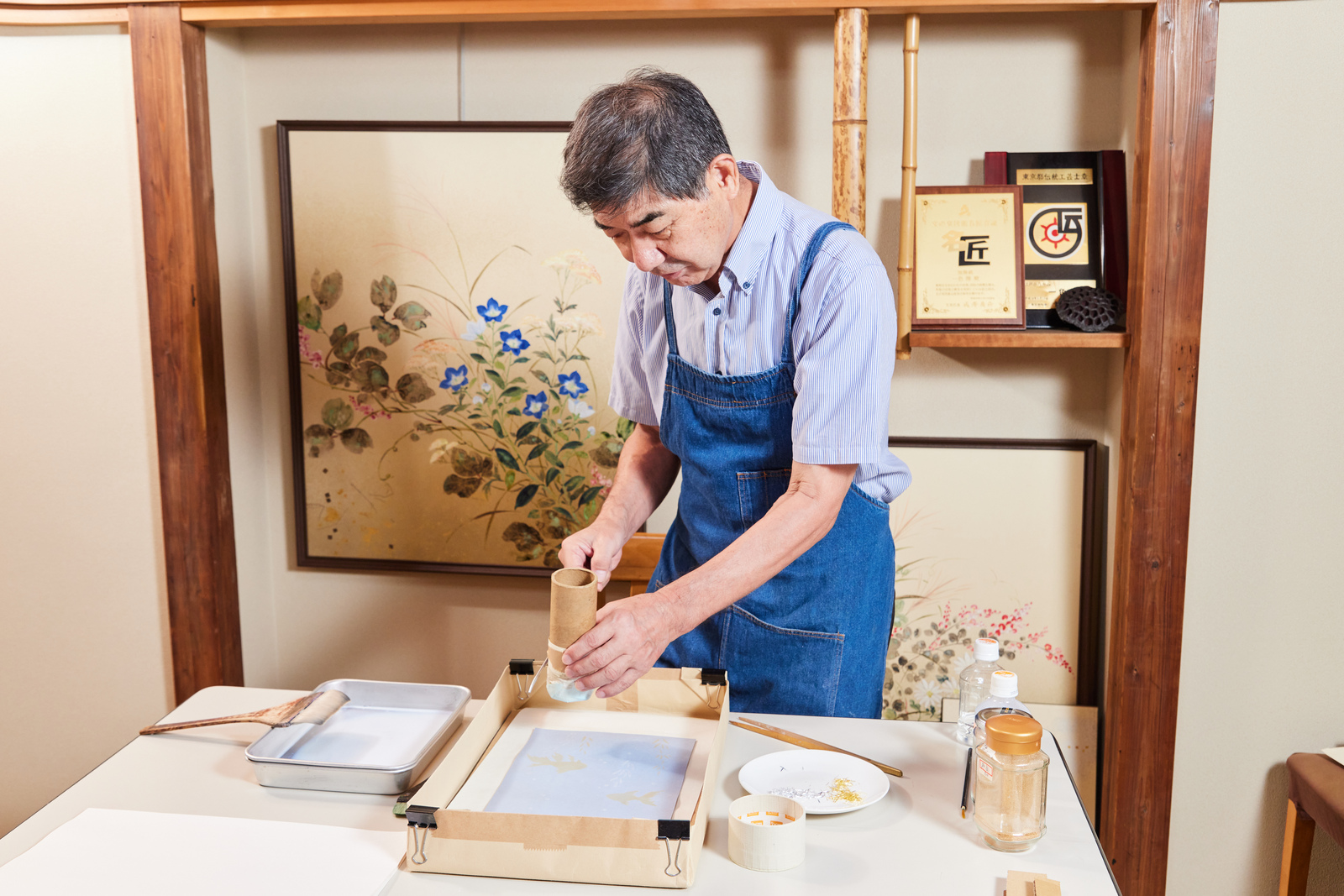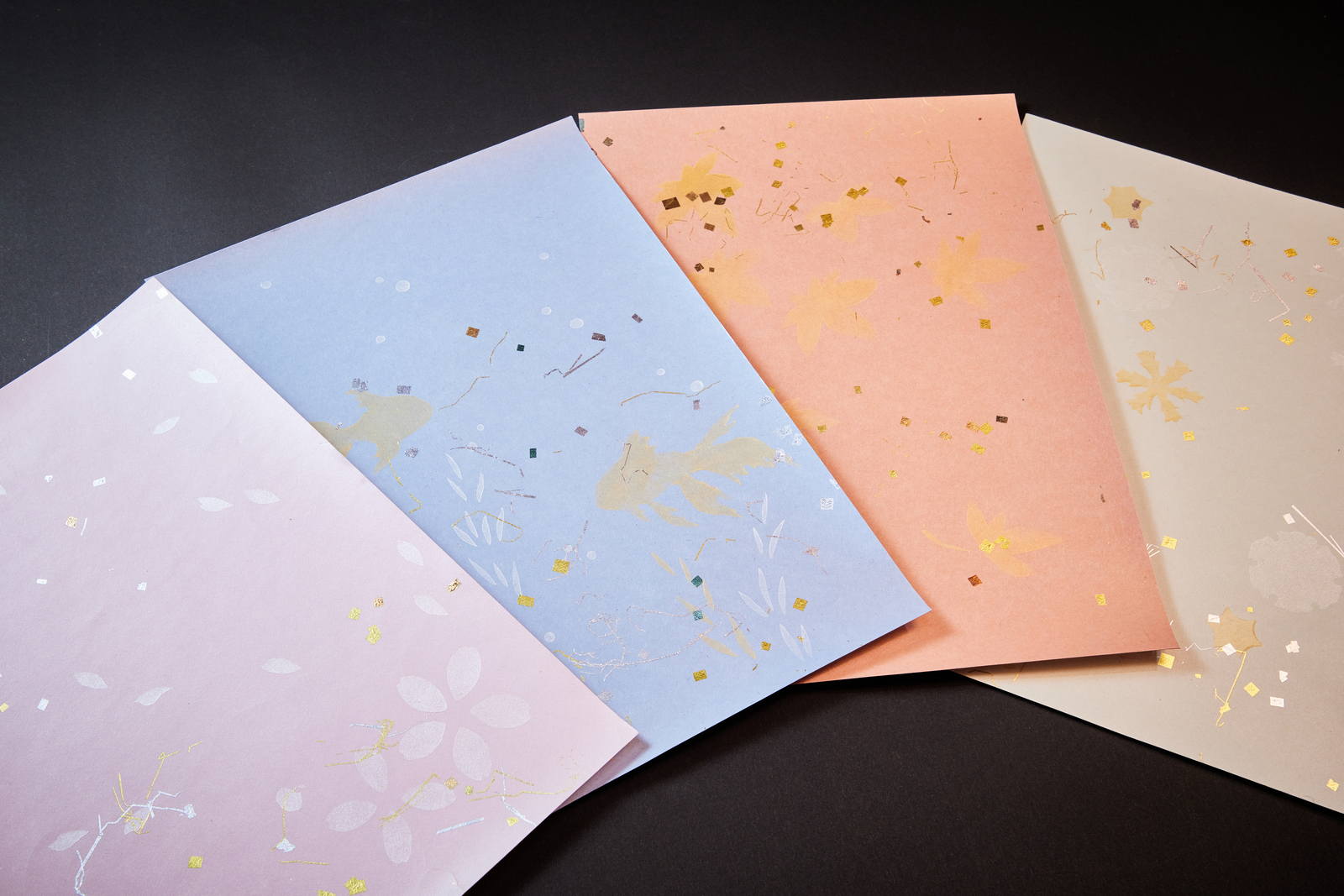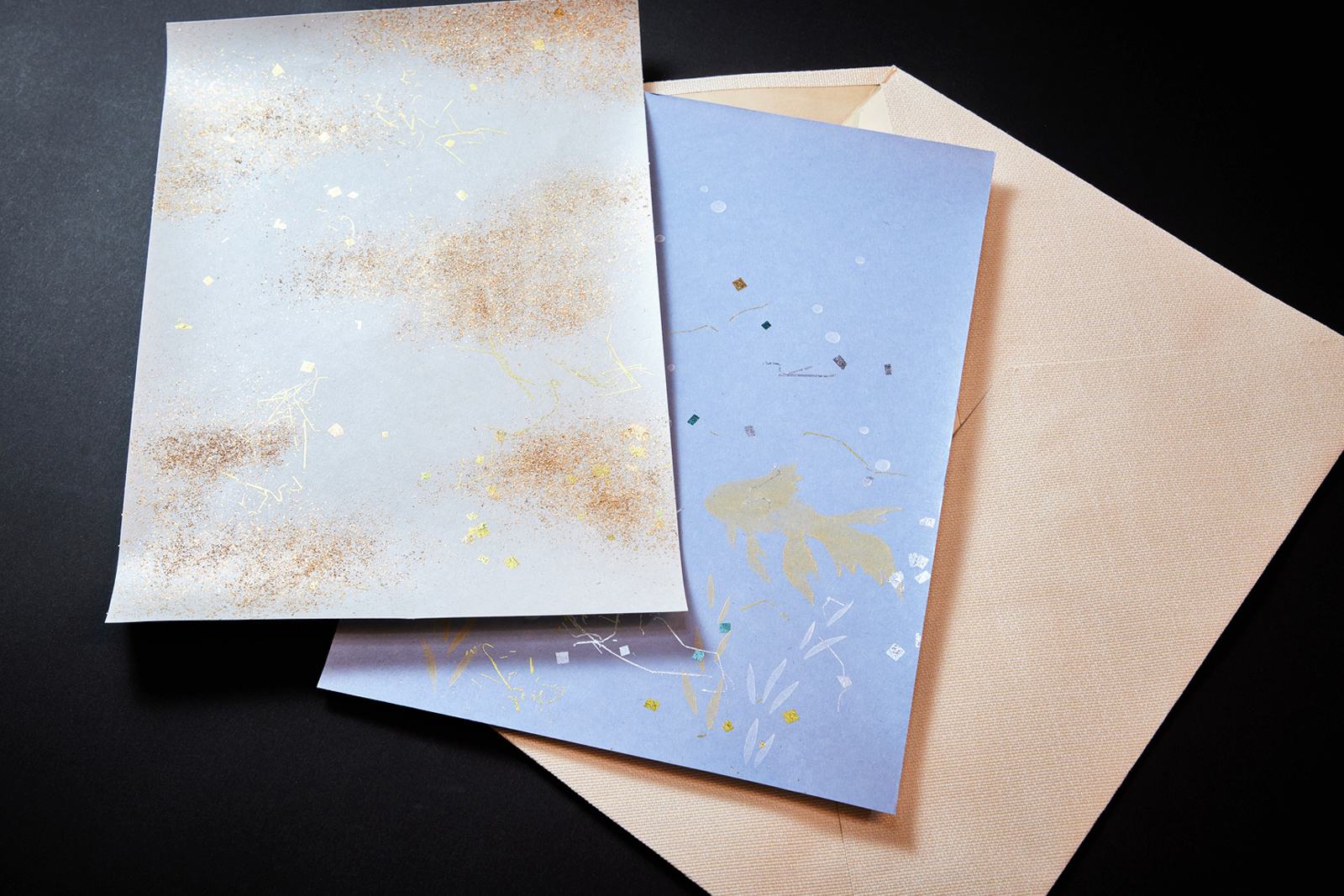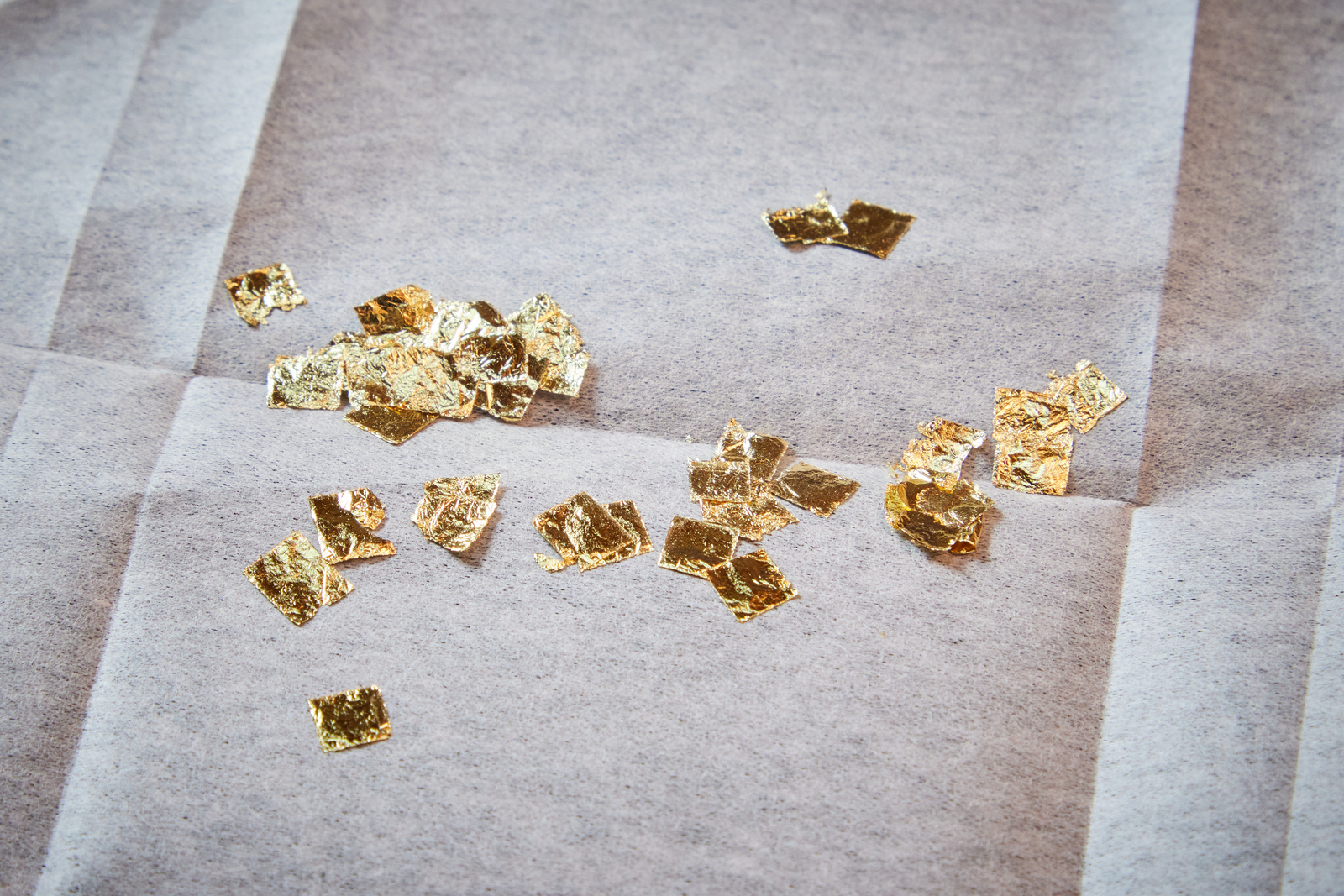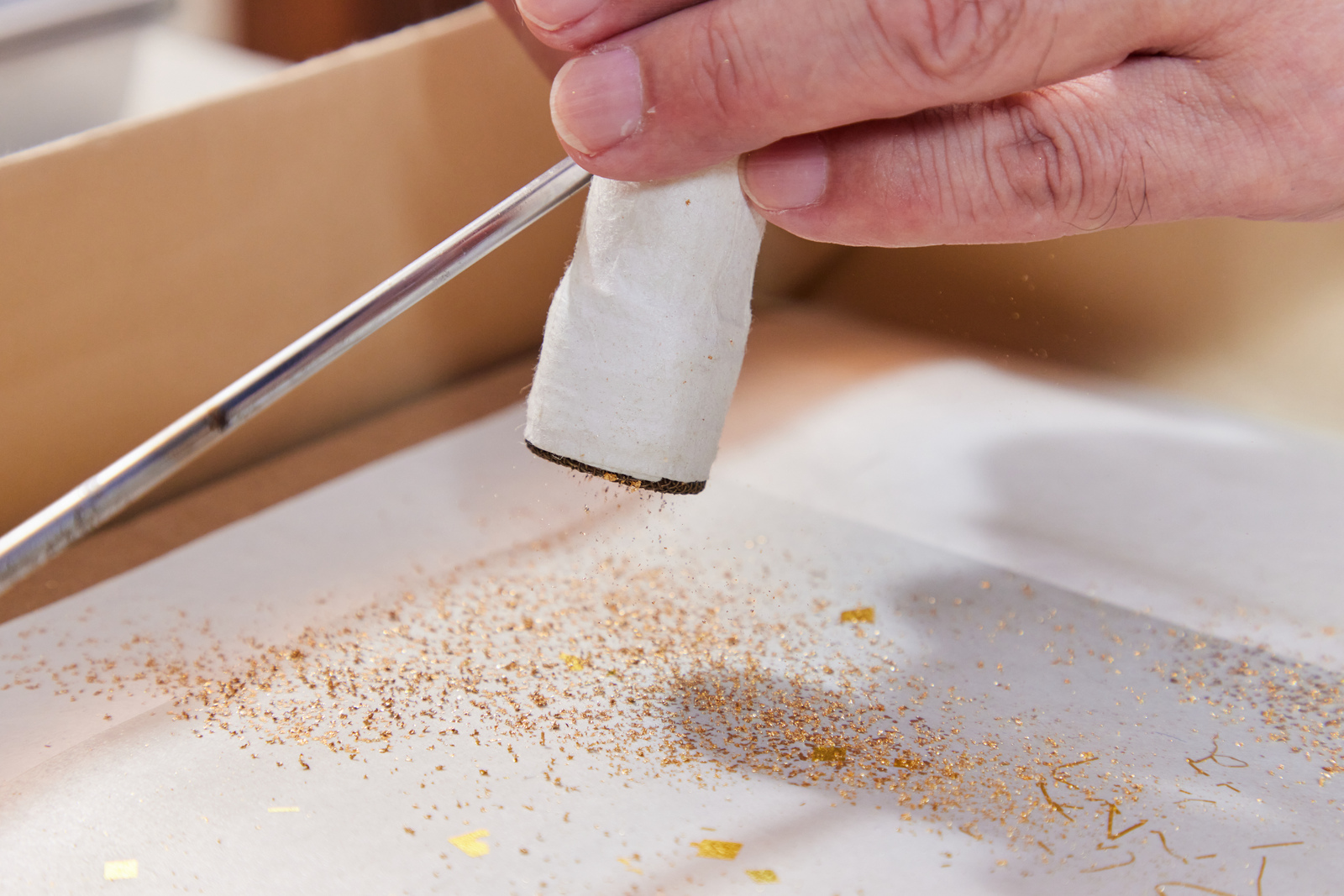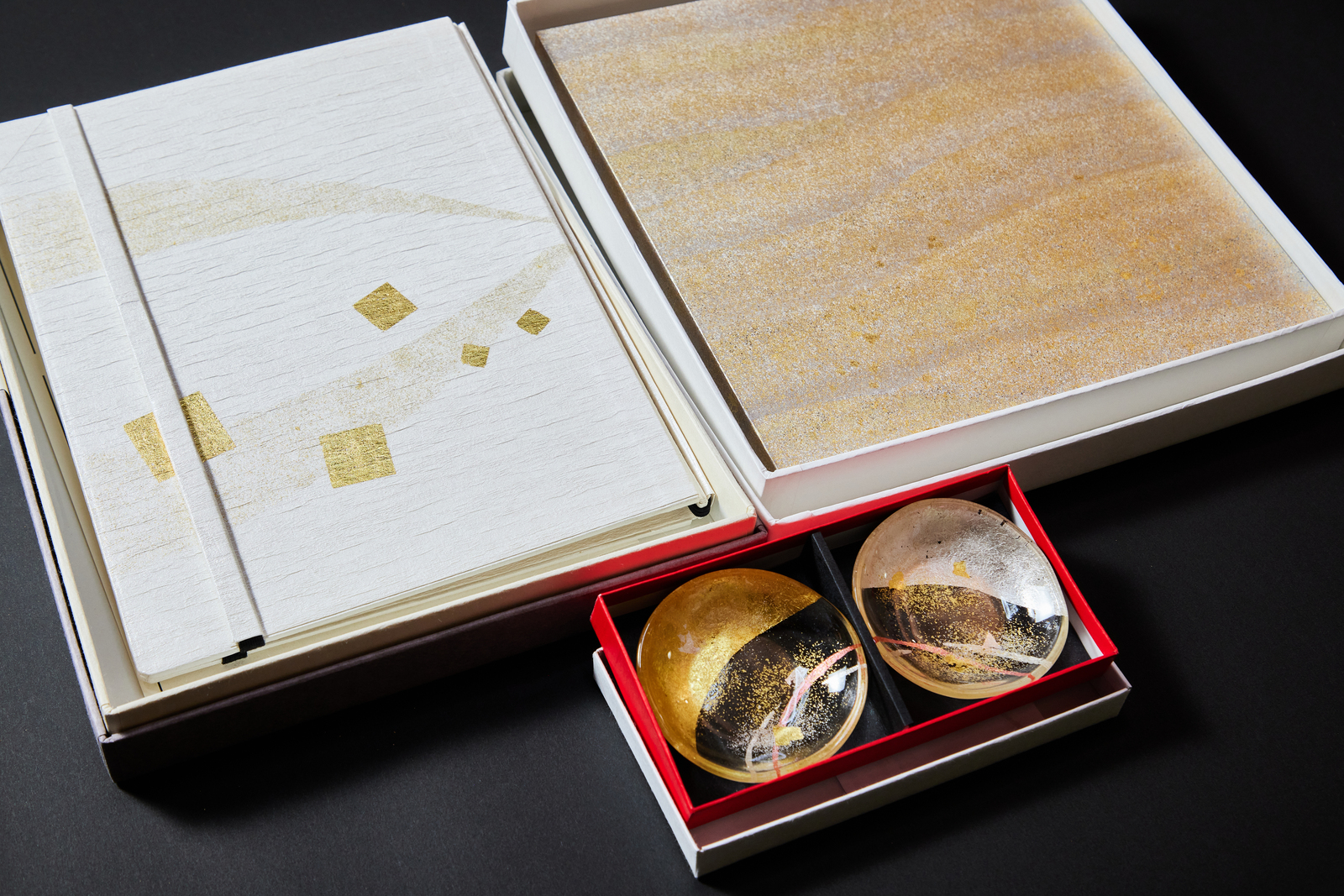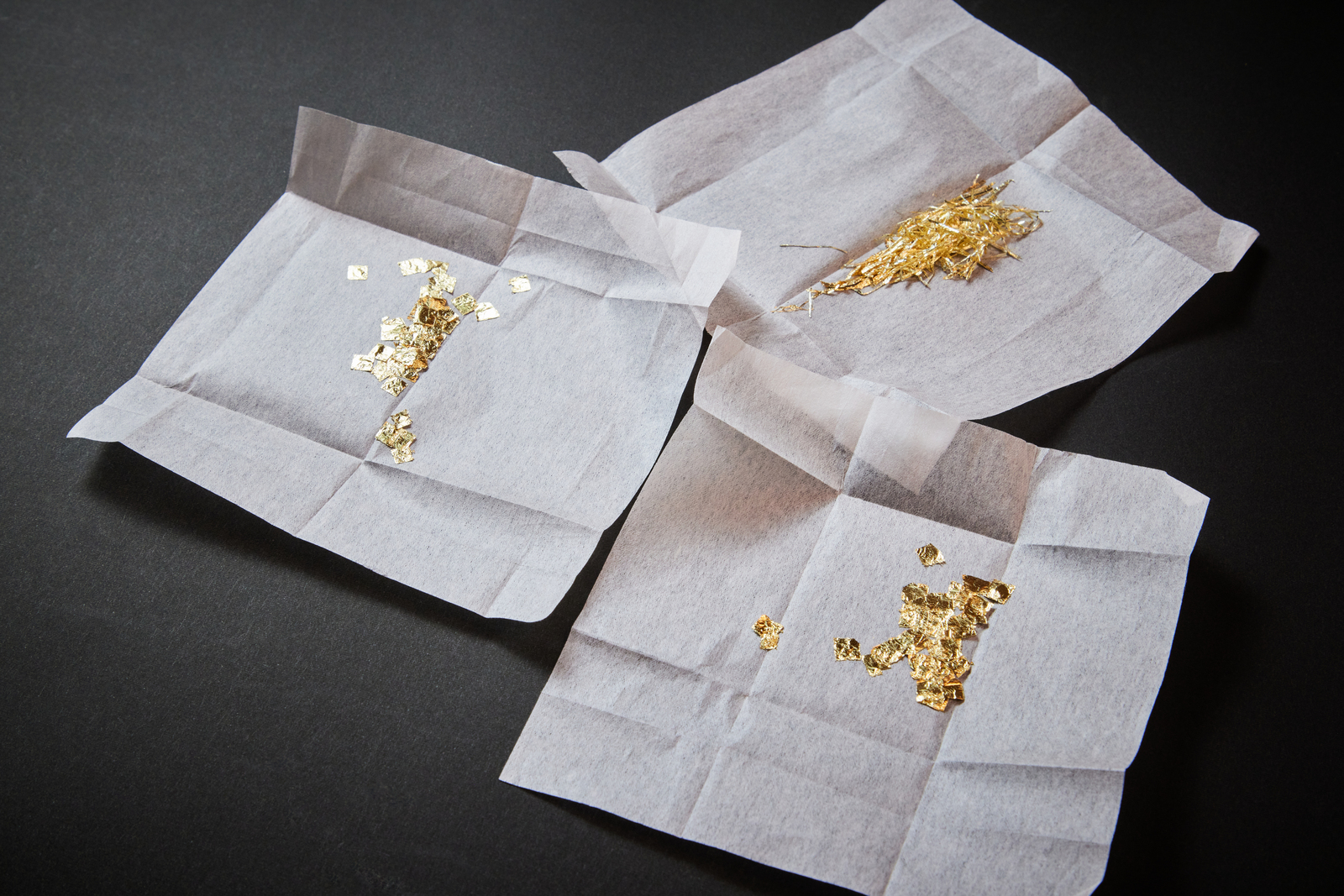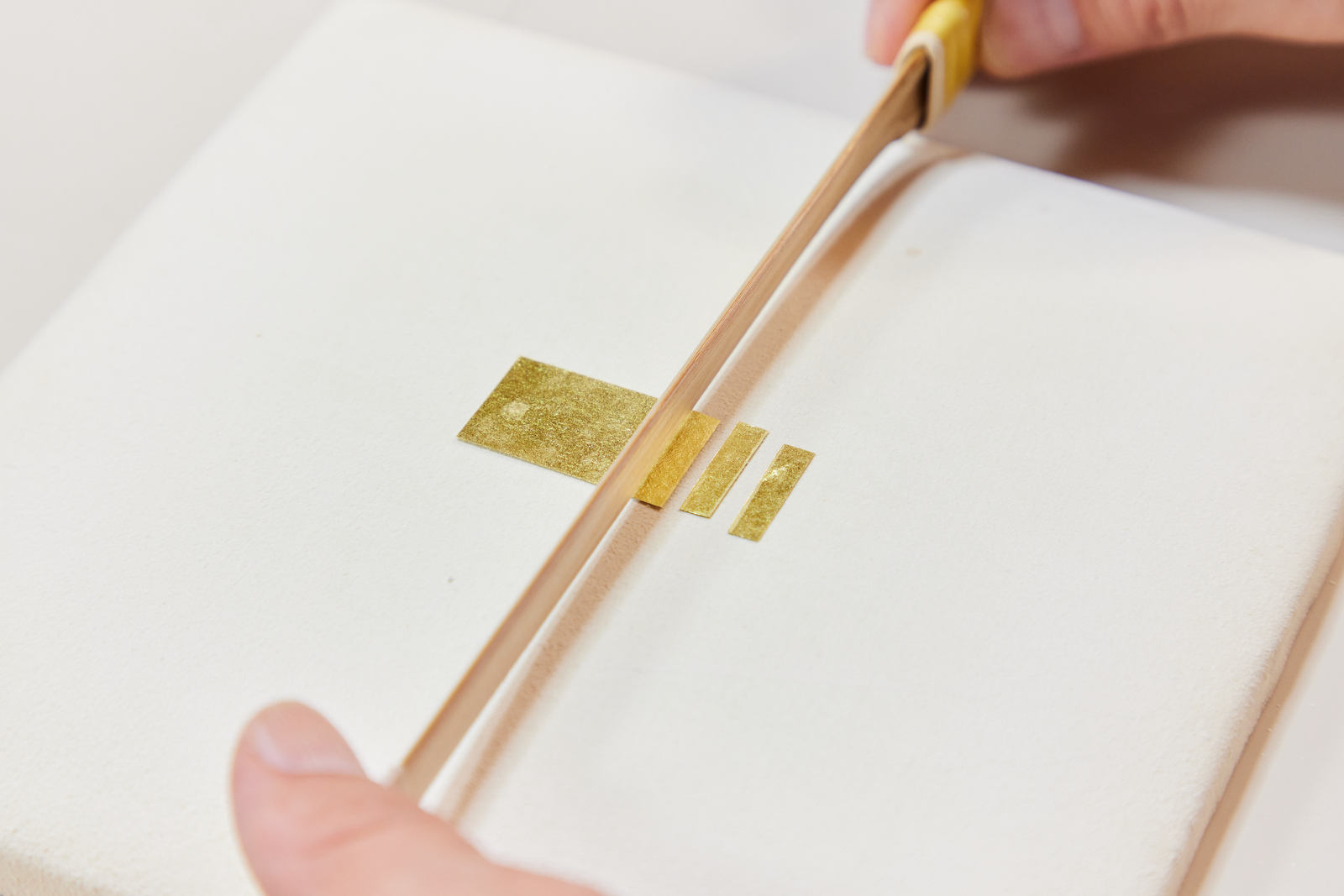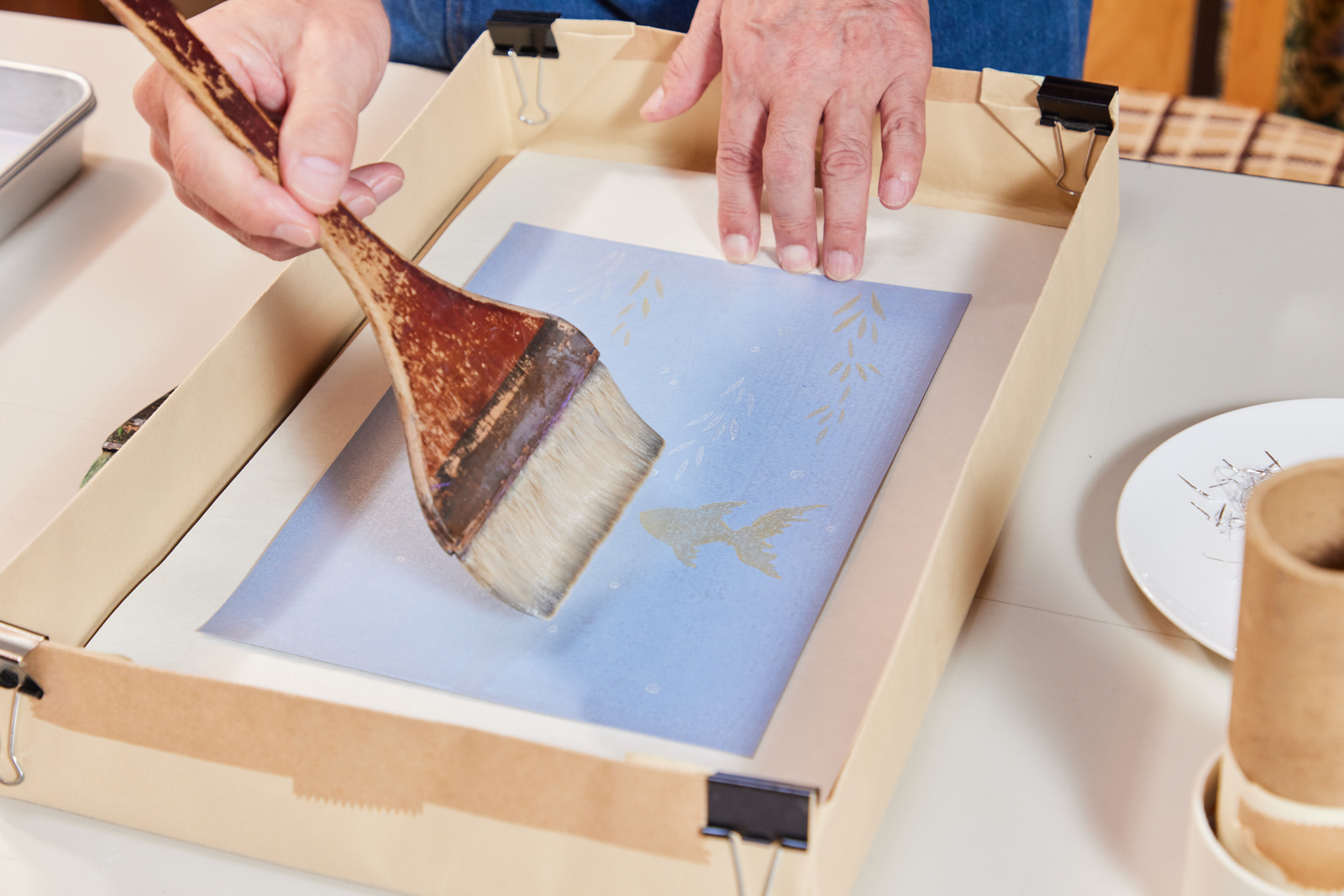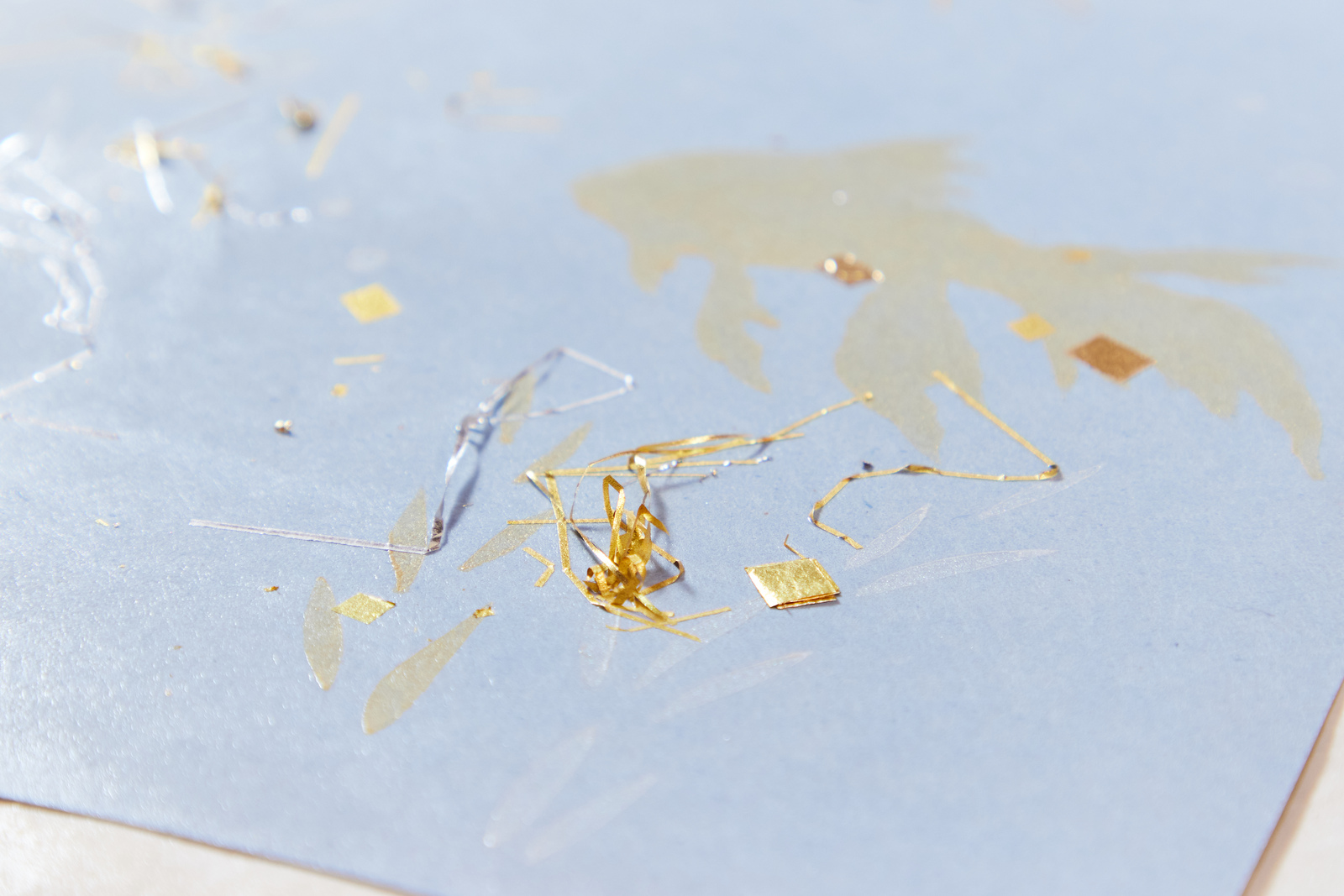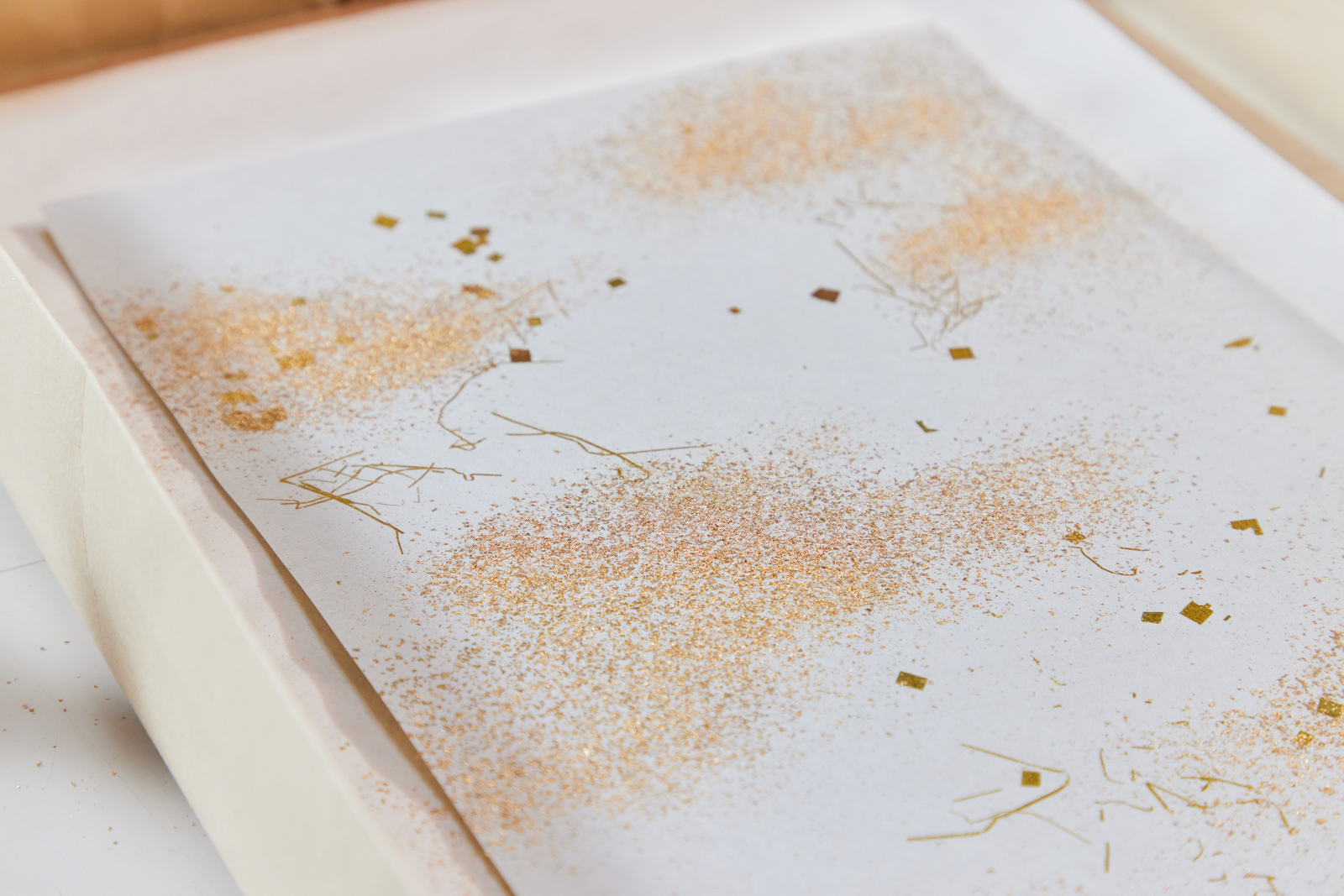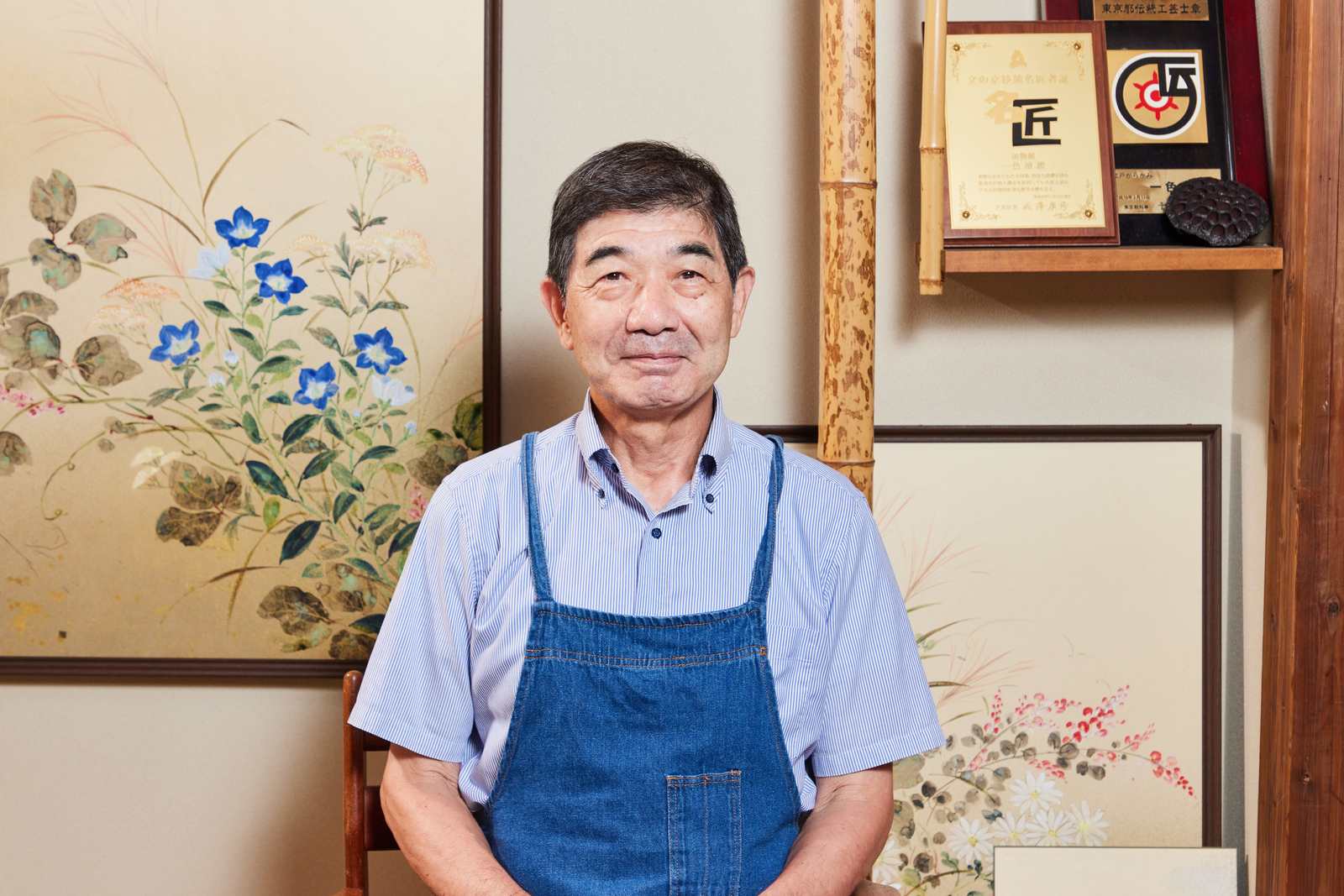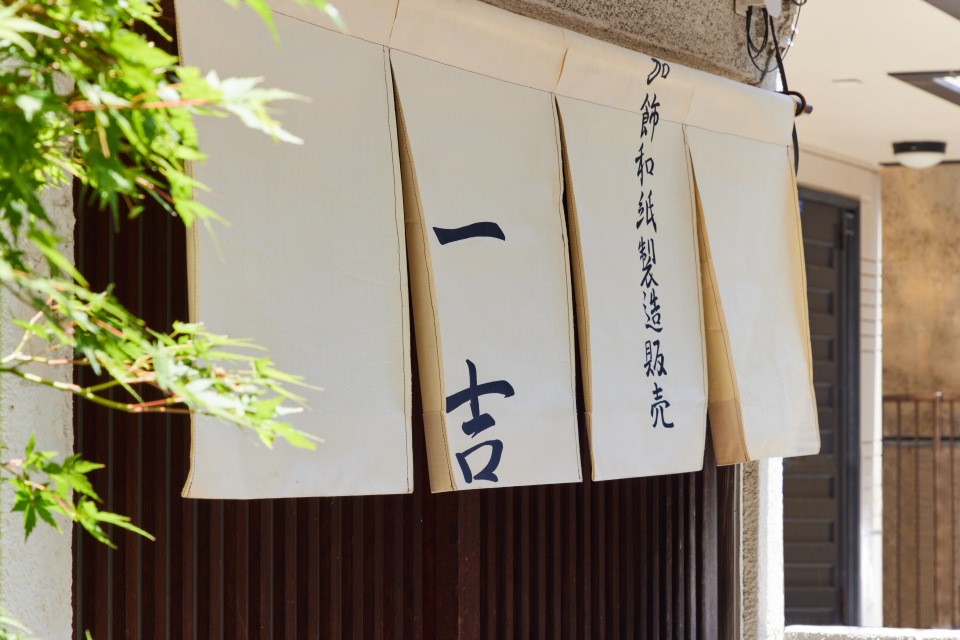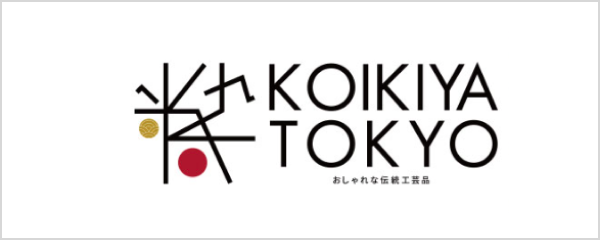Gold leaf powder decoration techniques with a history for centuries
The history of decoration in Japan dates back hundreds of years. During the Nara period, decorative techniques using gold leaf emerged, and records confirm the production of decorative Japanese Wahi paper. During the Heian period, gold leaf was used not only for ceremonial implements and the decoration of shrines and temples, but also to embellish numerous works of art. Some of the works from that period still exist today. The Heike Nokyo sutra scrolls, dedicated to Itsukushima Shrine by the Heike clan in the Heian period (1164), exude an exceptional gold-leaf powder technique and refined aesthetic sensibility.
Yushima Art was founded in 1897. It was established in Yushima by its first proprietor, Kichitaro Issiki. His skills were so highly regarded, he was requested for important tasks such as decorating the Imperial Household's menu paper with gold leaf powder. In the era of the second generational head Kazuo Issiki, Yushima Art shifted its focus to Karakami paper and expanded into design and printing that used gold leaf powder. The high-level technique of third generational head Kiyosi Issiki, who performs all of the techniques he inherited entirely by hand, is highly regarded. He was certified as a Minister of Economy Trade and Industry Designated Traditional Craftsperson in 2001.
A thickness of a mere 0.1 micron. Enjoy spending time with this delicate, ephemeral gold leaf.
In this activity, you will experience the process of decorating Karakami paper with gold leaf. Karakami paper is a patterned, decorative handmade Japanese Washi paper. It is a traditional Japanese craft item that is used for objects like sliding doors and folding screens. The patterns formed through traditional techniques are beautiful, and this paper is a traditionally crafted item that is immensely popular for interior decoration and gift-giving.
Decoration using gold leaf is a popular technique for adding to the allure of Karakami paper. The ephemeral yet dazzling shimmer of gold leaf continues to be cherished even today.
You will select your Karakami paper to decorate from among four types of design classified into spring, summer, autumn, and winter. If you like, you can choose the design that goes with the Japanese climate at the time you participate in the activity. Or, you could select a design that reminds you of the environs in your hometown. Choose whichever paper resonates with you personally.
Next, it is time to create the Kirihaku cut gold leaf you will use in your decoration. The process of cutting large gold leaf sheets into small pieces is done entirely by hand. The processing of gold leaf that is said to be a mere 0.1 micron thin is not something that can be left to a machine. You will cut two kinds of Kirihaku, stones in a square shape and wild seaweed strands in a thin, string-like shape. To prevent the pieces and strands from being blown away by even the slightest airflow, it is advised to wear a mask and hold your breath while making slow, careful cuts.
Your one-of-a-kind gold leaf powder will adorn seasonally rendered Karakami paper
After making Kirihaku, it is time to start decorating the Karakami paper. To adhere the thin, lightweight kirihaku, you will apply a thin layer of adhesive to the surface of the Karakami paper. To prevent the paper from becoming too heavy after completion, it is ideal to apply the coating thinly and evenly at this step. To prevent the adhesive from drying before decoration begins, your skill in spreading the adhesive quickly will be put to the test.
Now it is time to decorate. You will scatter the stones and wild seaweed strands you cut moments ago atop the paper on which you have thinly spread adhesive. With each gentle tap, tap, tap on the coarse powder tube, stones dance, and each wild seaweed strand slowly appears. The difficulty of placing elements exactly where you want is what makes Japanese art, with its reverence for chance, so fascinating.
The activity ends with a live demonstration from the artisan. Sunago powder is a much finer form of Kirihaku than the stones and strands. The art of Sunago-Maki, powder sprinkling, to make Kumo-Sunago (cloud powder) Karakami paper is the essence of the craft honed over many years by powder artisans. After enjoying the visual activity of Karakami paper that continually fluctuates as if it were a living creature, you can take home the two works of art crafted by yourself and the artisan.
From the past to the future. Experience the continually changing gold leaf powder.
Kiyosi Issiki, the third generational workshop head, comments, "Sunago has a long tradition, but also continues to evolve even today. My goal is to depict the patterns of sand dunes and the shimmering of water surfaces solely through the techniques of the Sunago workshop. I want people to experience the tradition and evolution of sunago powder."
In the world of gold leaf powder, traditions born of thousands of years coexist with the potential to create a new future. Experience the flow of time connecting the past to the future through this decorative crafting activity.
Founded in 1897 in Yushima, Bunkyo-ku, Tokyo. It carries on traditional decoration techniques, such as finely crushing and sprinkling gold and silver leaf to make Gold and Silver Leaf Powder Paper and using a brush to spread a crushed and mixed liquid blend of gold and silver leaf to make Deibiki Paper. Drawing on the tradition of his predecessors who crafted Karakami paper decorations, Kiyosi Issiki, the current third-generation master, has expanded into creating numerous contemporary items adorned with powder, including decorative accessories and wall hangings. While respecting traditional techniques, he continues to pursue new forms of expression.
